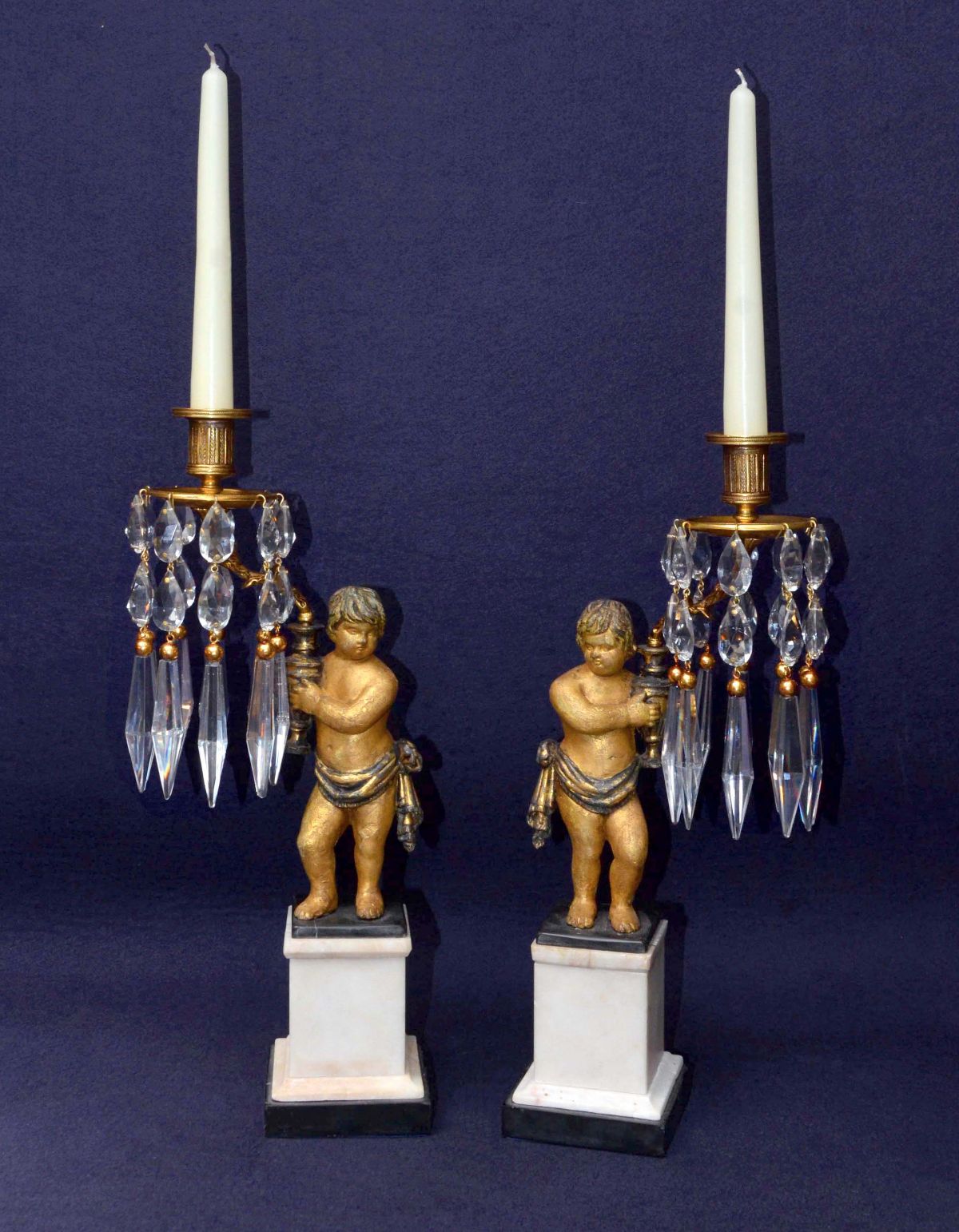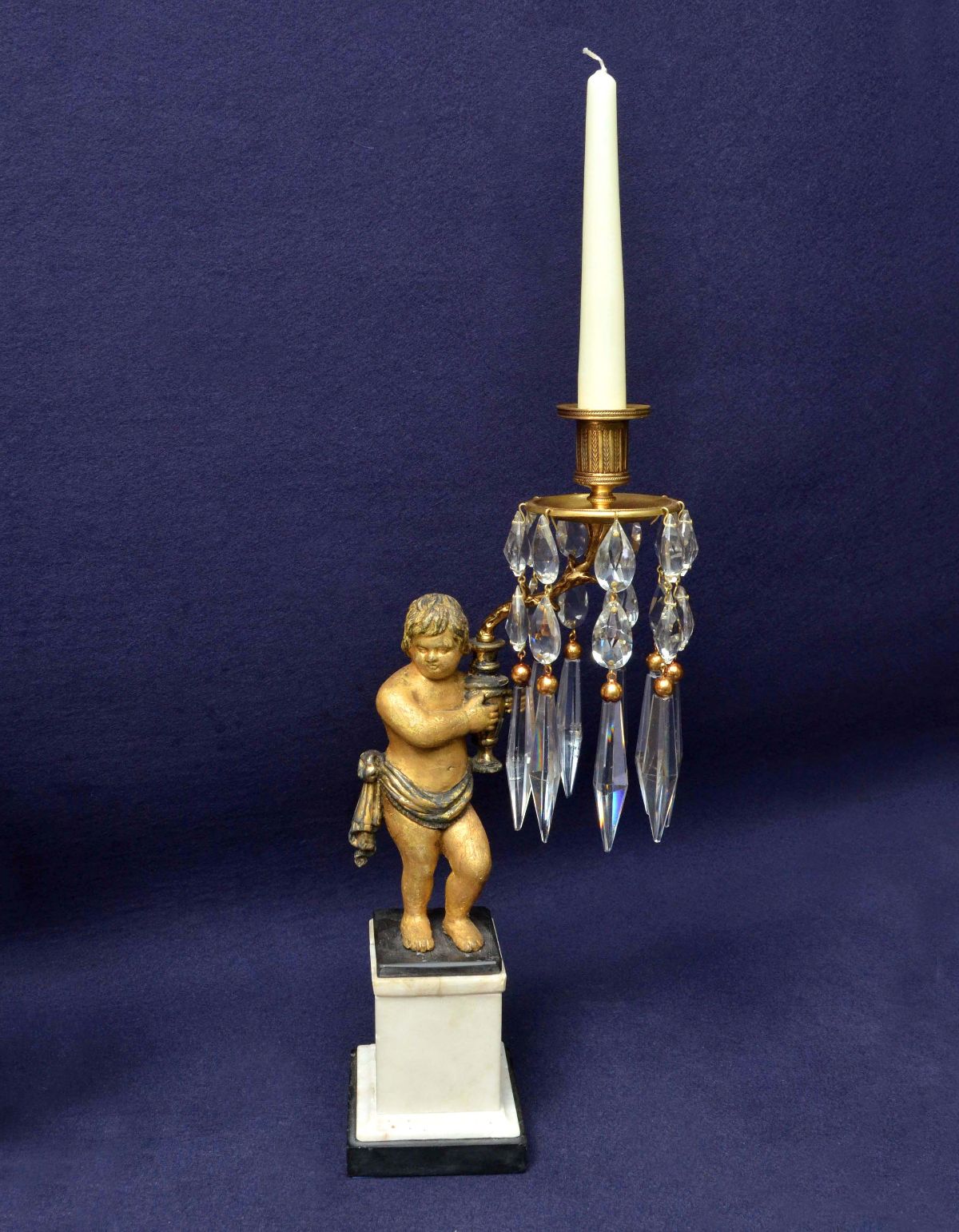Pair of Regency ‘Young Boy’ gilt-gesso Lustre Candlesticks
test
Pair of Regency ‘Young Boy’ gilt-gesso Lustre Candlesticks
6172
Pair of Regency ‘Young Boy’ gilt-gesso Lustre Candlesticks:
the asymmetrical boy figures on black and white stepped marble bases; each with an urn bearing a gilt-bronze leafy branch with finely chased candle-cup and pan, dressed with racemes of cut glass prisms and gilt-capped ‘icicle’ pendants. Circa 1800, restored.
| Height: | 15" | - | 38.0cm |
| Width: | 6" | - | 15.0cm |
| Projection: | 3½" | - | 9.0cm |
Glossary Words
Regency
Named after the Prince Regent, later George IV, circa 1810 to 1830, the term is also used more widely to describe the prevailing English neo-classical style between the 1790s and 1840. In lighting, they used multiple cut-glass prisms to achieve as many reflections as possible such as 'double-stars' and 'icicles'. Two chandelier designs typical of this period are the colza oil dish light and the balloon-shaped chandelier with graduated chains of prisms.
gesso
Plaster-covered wood, usually applied with gold leaf.
gilded, gilt
A very thin layer of gold applied to brass or bronze.
raceme
frond or pannicle of leaves, buds or glass drops.
'icicle' pendant
Tapered cut-glass pendant with multi-facetted cutting, in the shape of an icicle.
lustre
The literal meaning in French is 'chandelier', or 'shine'; in English, 'radiance' or 'reflected light'. This word is also used for a cut-glass candlestick, usually with a fringe of cut glass prisms.
cut glass
Often now referred to as 'crystal', the glass was blown and shaped, then passed to a specialist cutter, who would polish and cut patterns to enhance its brilliance.





